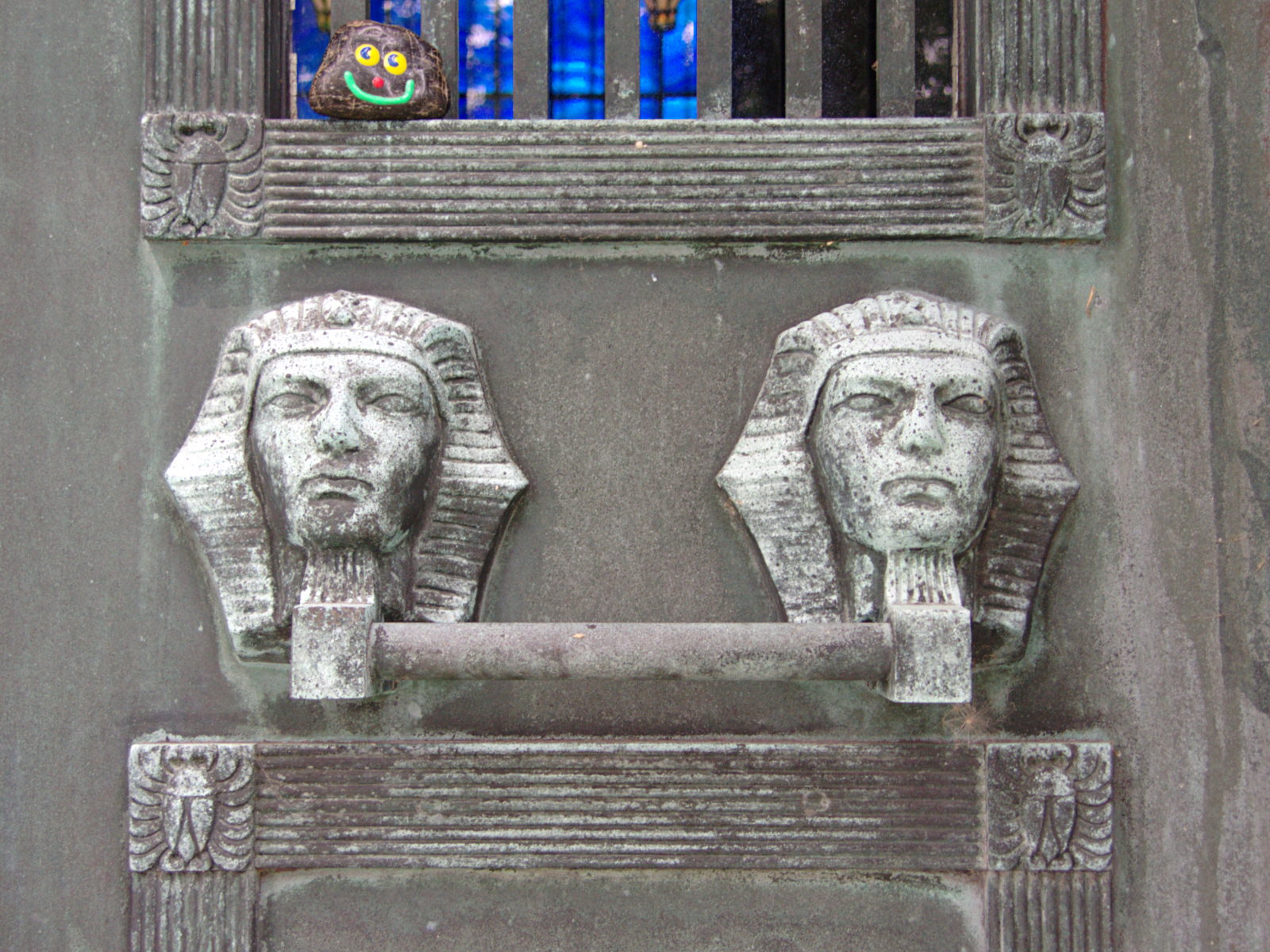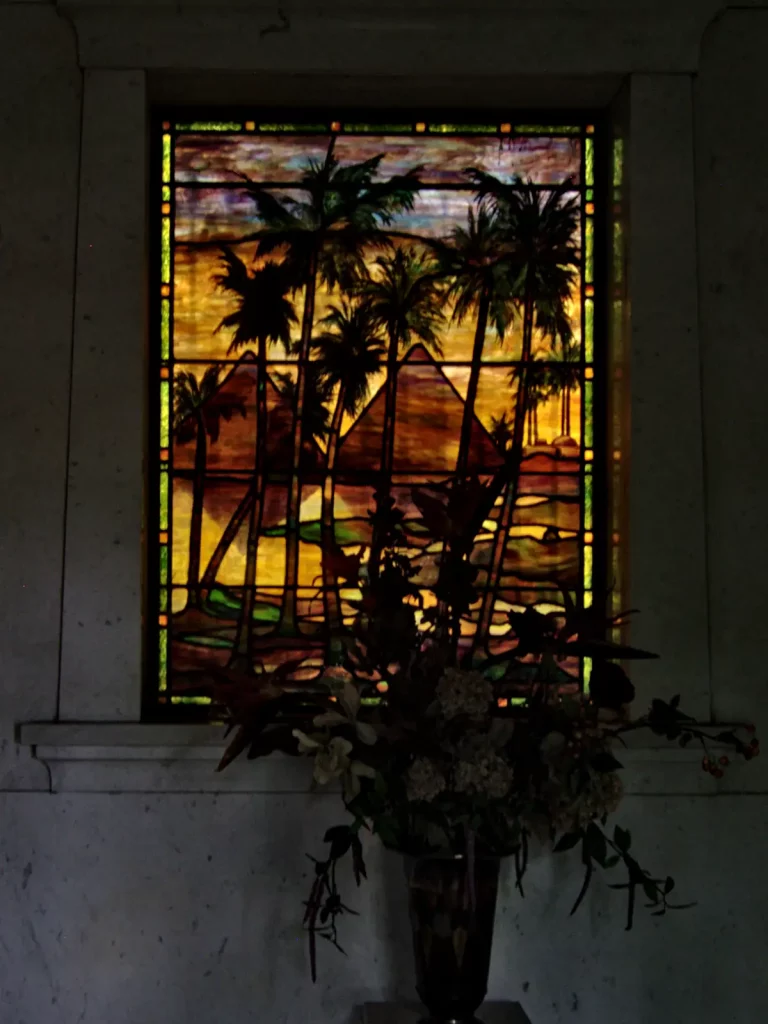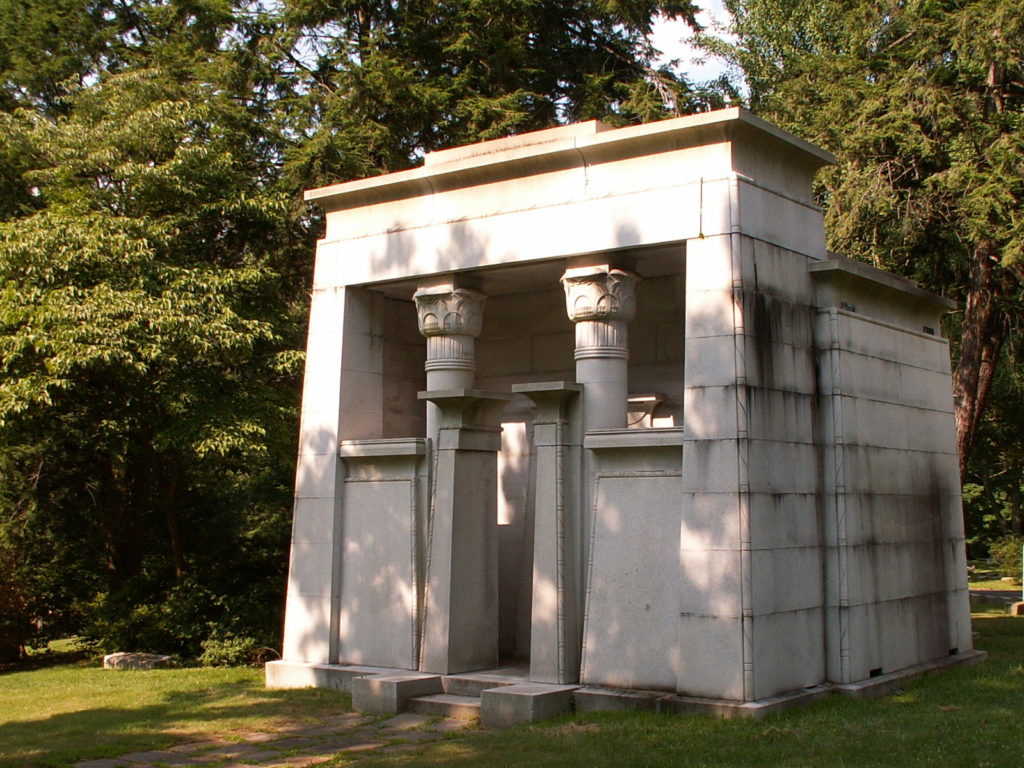
Another Egyptian mausoleum that hits all the expected marks, except that it is too small (or cheap) for lotus columns. This one, however, adds the delightful detail of pharaoh’s-head door pulls, which more than makes up for the missing columns.

Little smiley characters like the one at upper left occasionally appear on mausoleum doors in Pittsburgh cemeteries. It’s a cheerful little mystery.
A thorough history of the Sunsteins and Speyers is in the Jewish Encyclopedia of Western Pennsylvania.














